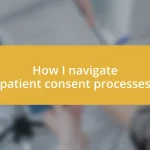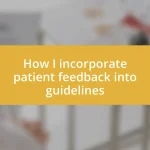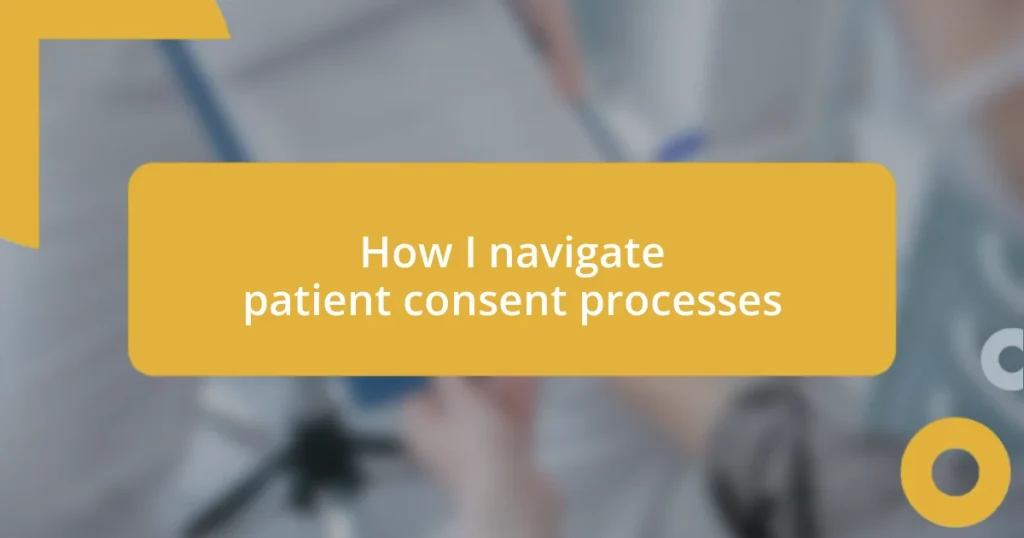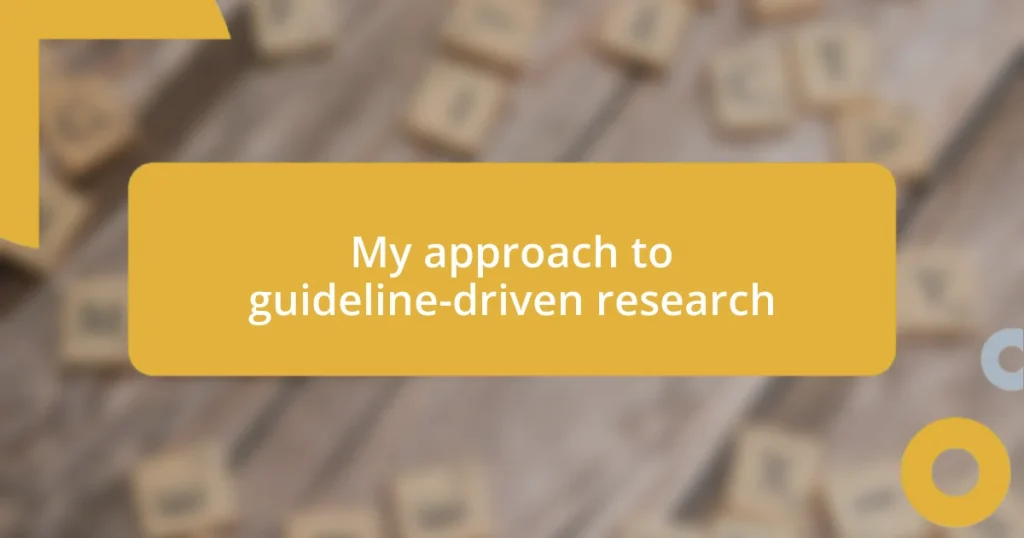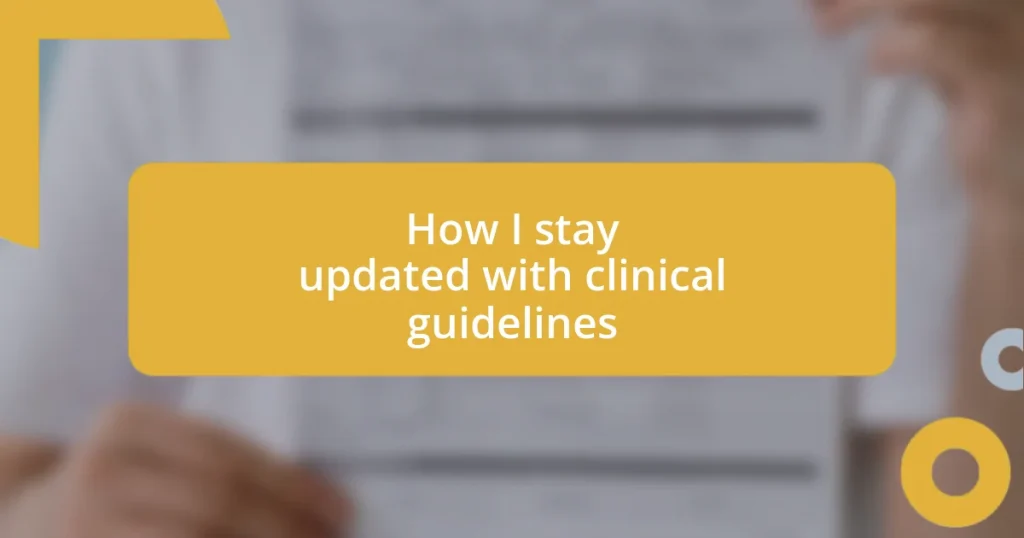Key takeaways:
- Effective patient consent is fundamental for building trust, requiring clear communication and addressing patients’ fears and concerns to empower informed decisions.
- Legal requirements and documentation are essential in the consent process, ensuring patient rights are respected and safeguarding both the patient and healthcare provider.
- Continuous improvement, through patient feedback and technology integration, is necessary for enhancing consent practices and ensuring patients feel truly involved and comfortable in their healthcare choices.
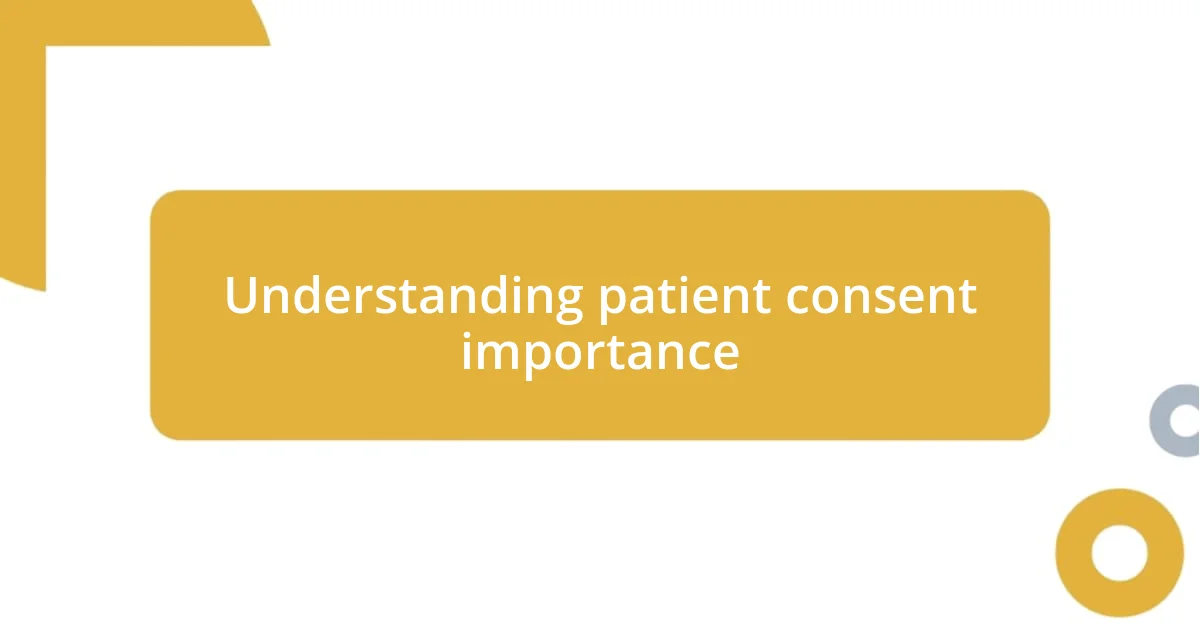
Understanding patient consent importance
Understanding patient consent is crucial for establishing trust in the healthcare relationship. I remember a time when a patient shared her anxiety about undergoing a procedure without fully grasping what it entailed. It hit me then just how essential it is for patients to feel informed and empowered. When patients understand what’s happening, they’re more likely to engage positively in their care, and that connection is truly invaluable.
Every time I walk a patient through the consent process, I sense the weight of their vulnerability. There’s an emotional layer to this interaction that can’t be overlooked. Are they truly comfortable with the information provided, or are they just nodding along? I’ve found that asking open-ended questions sparks deeper conversations, allowing room for their fears and concerns, which is pivotal in ensuring they feel completely safe in their choices.
Consent isn’t merely a checkbox; it’s an acknowledgment of a patient’s autonomy and right to make informed decisions about their health. It’s striking how the simple act of discussing potential risks and benefits can transform hesitation into confidence. When I see a patient relationship strengthen through this dialogue, it reaffirms my belief that genuine communication in consent is what truly uplifts healthcare practices.
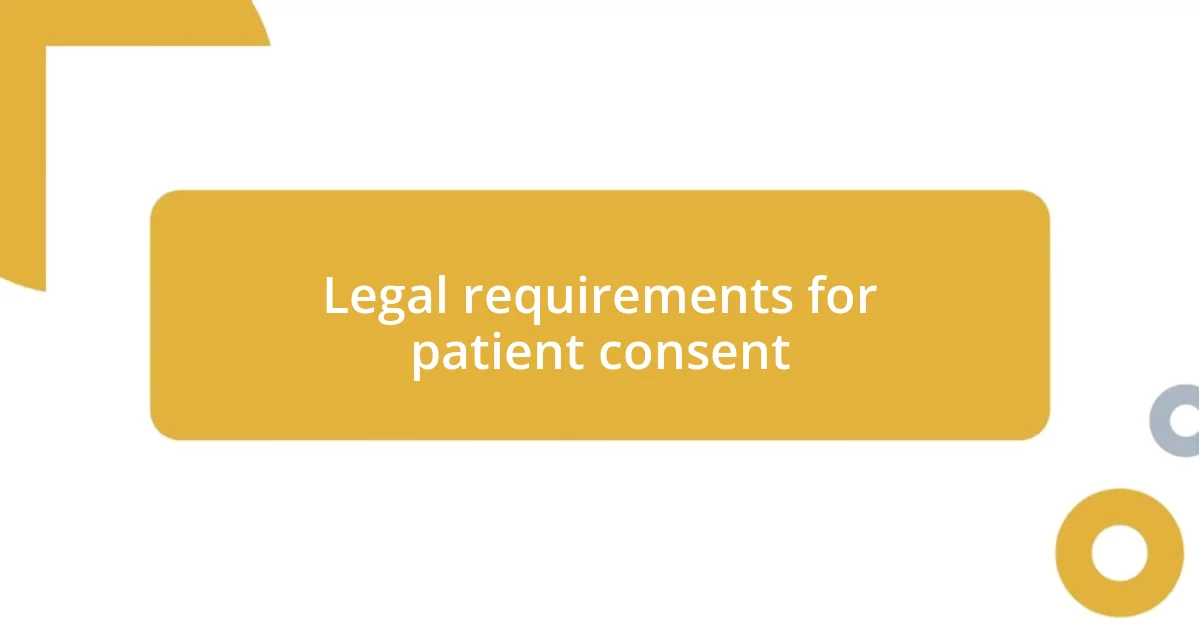
Legal requirements for patient consent
Legal requirements surrounding patient consent are critical, as they ensure patients are adequately informed and that their rights are protected. I remember the first time I encountered a situation where consent wasn’t properly documented. It felt like a major oversight on my part, and it highlighted how essential it is to adhere to legal standards. It’s not just about following the rules; it’s about safeguarding patients and building a foundation of trust in our interactions.
Every region has unique regulations regarding consent. For instance, in some areas, a verbal agreement might suffice, while others require detailed written documentation. I’ve often dealt with cases where patients were unsure about the extent of their rights. This confusion can cause anxiety, so I make it a point to clarify legal stipulations while I explain consent steps. Ensuring patients understand what they’re consenting to not only enhances their comfort but also aligns with legal expectations.
Additionally, it’s important to remember that consent laws can evolve. I once faced a scenario where changes in legislation directly impacted the consent process for a specific treatment. Staying updated has become a priority for me. This adaptability in understanding the legal landscape ensures that my patients feel secure and respected in their decision-making.
| Aspect | Details |
|---|---|
| Informed Consent | Patients must be fully informed about the procedures they consent to, including risks, benefits, and alternatives. |
| Documented Consent | Many jurisdictions require written consent for invasive procedures. |
| Age of Consent | The legal age of consent can vary; minors may require parental approval. |
| Healthcare Provider’s Responsibility | It’s the provider’s duty to ensure comprehension and facilitate informed decisions. |
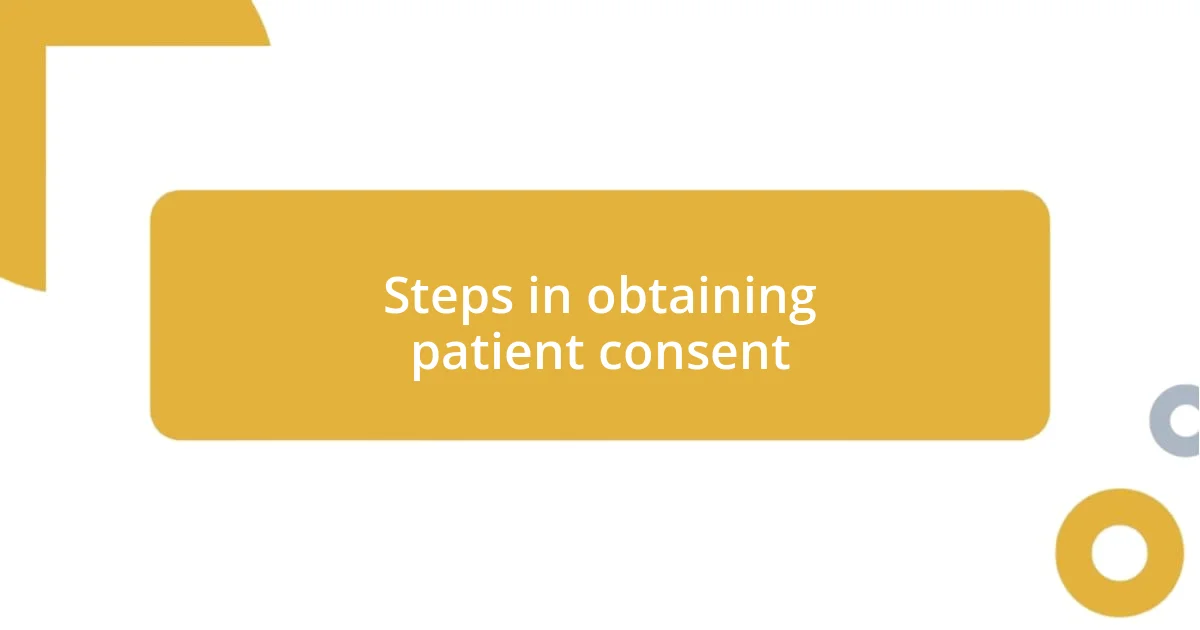
Steps in obtaining patient consent
When obtaining patient consent, I find it essential to approach each interaction with sensitivity and clarity. The first step involves clearly explaining the procedure and what it entails. Recently, a patient shared with me how daunting it was when they first encountered medical jargon. Seeing the confusion in their eyes reminded me that my role is not just to inform but also to ensure they truly grasp the concepts. It’s a straightforward process that requires patience and empathy.
Here are some specific steps I follow in the consent process:
- Initial Discussion: Introduce the procedure, focusing on a plain-language explanation of key terms.
- Address Questions: Encourage patients to speak up about their concerns and queries. I often share relatable experiences to make them feel at ease.
- Outline Risks and Benefits: Clearly present potential outcomes, ensuring patients understand both sides. Sharing examples from past patient experiences can provide context.
- Document Consent: Secure their agreement in writing — this protects both the patient and myself. In one case, I took extra care to review the document with a nervous patient, making sure they felt secure before signing.
- Follow Up: After consent is obtained, I like to check in prior to the procedure, reinforcing that their comfort and understanding remain my top priorities.
By following these steps, I strive to empower patients in their decision-making process while fostering an environment of trust and transparency. The emotional connection built during this process is something I genuinely cherish. Each exchange enriches my practice, reminding me of the profound impact we have on our patients’ journeys.
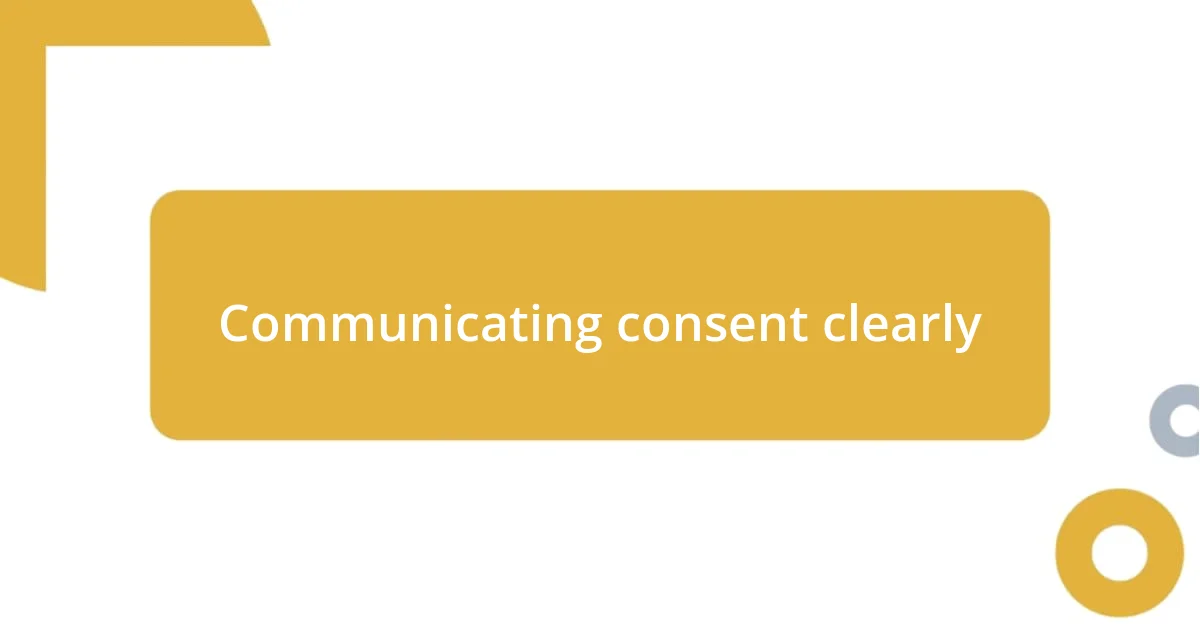
Communicating consent clearly
I believe that clear communication around consent is fundamental in healthcare. One time, I had a patient who seemed unconvinced and hesitant after I presented the details of a procedure. In that moment, I realized I needed to break everything down further—so, I shared a simple analogy comparing the procedure to getting a new phone, explaining the upgrade benefits versus possible hiccups. By reframing my explanation, I noticed the patient’s demeanor change; suddenly, they seemed more engaged and relaxed, which reinforced for me just how critical it is to tailor my communication to each individual.
It’s always enlightening to see how patients react when they truly grasp what’s being discussed. I remember a young woman who expressed anxiety about surgery after overhearing her friends share horror stories. I took the time to not only explain the procedure but to also address her fears in a compassionate way. I asked, “What exactly worries you most about this?” Hearing her concerns helped me guide the conversation and clarify misconceptions. By the end of it, I felt a shift in her energy—she went from apprehensive to hopeful, which often reminds me of the immense responsibility we hold as providers to convey precise and compassionate information.
I’ve come to understand that consent is an ongoing dialogue, not a single event. After obtaining consent, I check in regularly, asking questions like, “Do you feel good about what we discussed?” or “Is there anything that’s still on your mind?” One time, a patient conveyed a last-minute fear about the anesthesia process, which I hadn’t anticipated. Addressing her concerns on the spot made all the difference for her. It’s these moments of transparency and genuine connection that solidify my belief that effectively communicating consent can significantly enhance trust and confidence in our healthcare relationships.
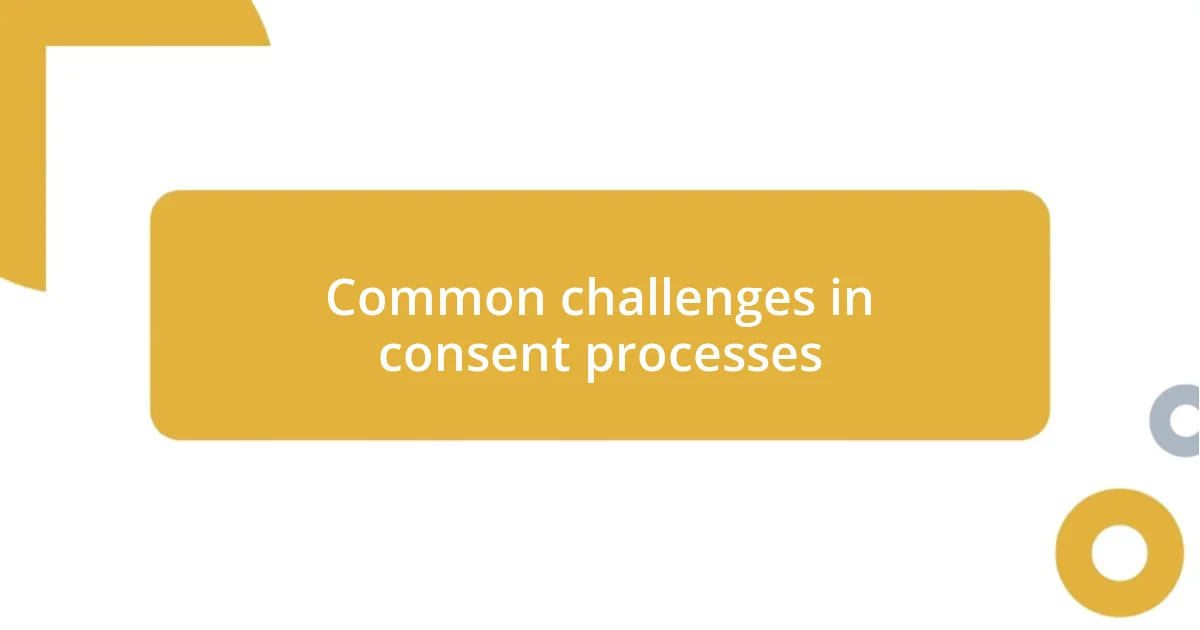
Common challenges in consent processes
Navigating the consent process isn’t always smooth sailing. I’ve encountered situations where patients feel overwhelmed by the sheer volume of information. Recently, I met a man who seemed lost amidst details about a surgery. I found myself thinking, “What if I were in his shoes?” Simplifying the explanation to just the essentials helped him process the information more effectively, demonstrating that sometimes less is more.
Another common challenge arises when patients struggle to recall previously discussed information, especially when they’re anxious or stressed. I remember a nervous mother who had a million thoughts swirling in her mind before a minor procedure for her child. After our initial conversation, I made sure to send her a follow-up message summarizing our discussion. When she received it, I could almost feel the relief wash over her. I realized then that it’s crucial to provide written material and ensure there’s a clear reference point for them to revisit.
One must also consider language barriers, which can complicate the consent process. I recall an elderly gentleman whose primary language wasn’t English. It struck me how much we can take for granted in our communications. By bringing in a translator and using visual aids, the atmosphere transformed. He nodded along, and I could see his confidence grow. It made me ponder, how often do we overlook the importance of accessible communication tools? Addressing these challenges fosters an environment where patients feel empowered and respected in their decision-making journey.
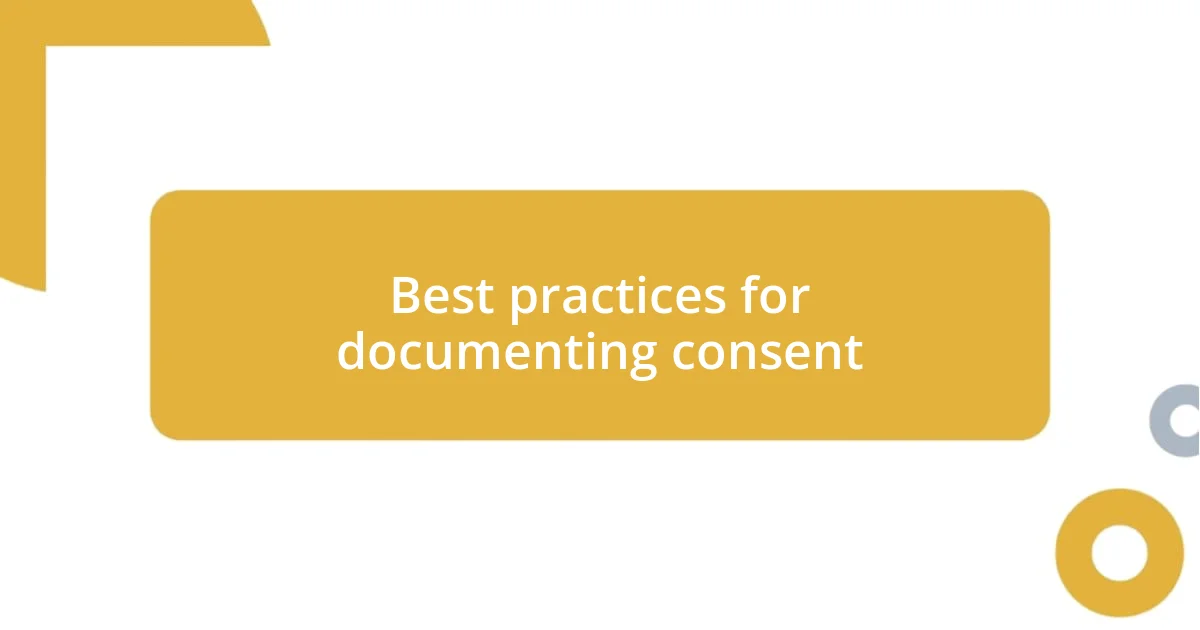
Best practices for documenting consent
One of the best practices I’ve found in documenting consent is to always be thorough and detailed. I once worked with a patient who had a lot of questions about a complex treatment regimen. After our discussion, I made sure to document not only her consent but also her specific concerns and my responses. This not only protected me legally but also served as a reference for future visits, ensuring we had a shared understanding. Isn’t it reassuring to know that we can go back to those records whenever needed?
Equally important is obtaining the patient’s signature in a manner that feels genuine. I remember a time when I encouraged a patient to sign an electronic consent form after a comprehensive conversation. Instead of just handing over the tablet, I took a moment to recap the key points we discussed. Seeing her thoughtfully review the information before signing was impactful. It reinforced for me that consent isn’t just a box to check; it’s an affirmation of the patient’s understanding and comfort level.
Finally, providing a copy of the consent documentation is crucial. After a particularly intense consultation about a procedure, I handed my patient a printed copy of the consent form along with a summary of our discussion. The look of appreciation on her face was priceless; it was clear that having that tangible document helped her feel more secure in her decision. How often do we forget that patients like to leave with something substantial, a reminder of what they agreed to? It’s these small yet significant practices that contribute to a comprehensive and patient-centered consent process.
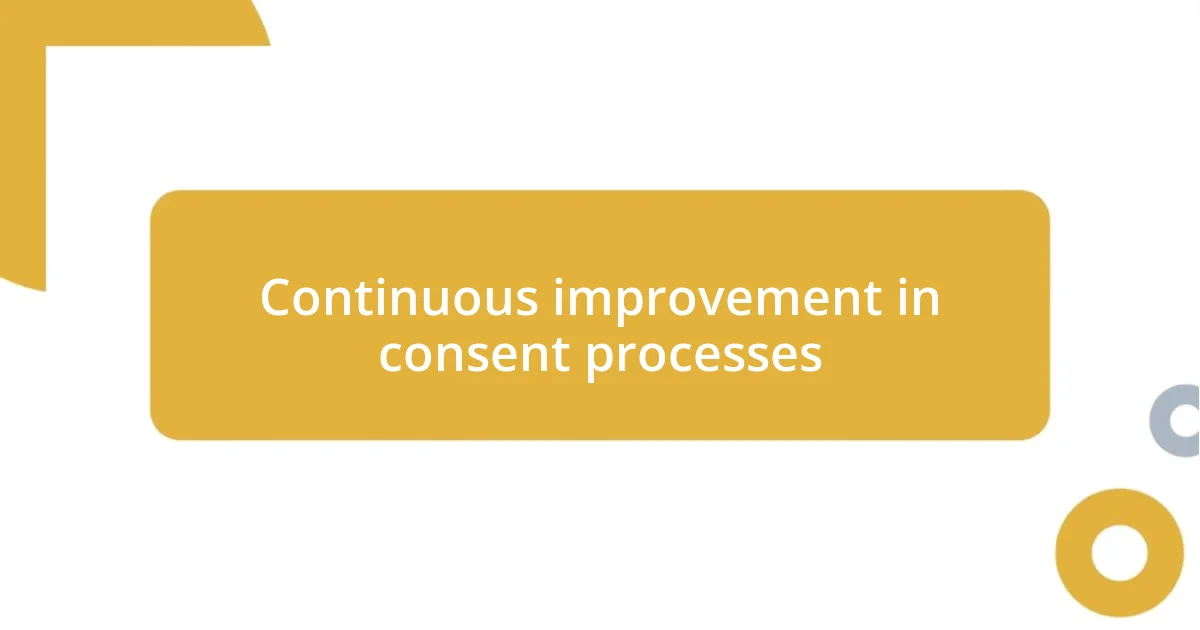
Continuous improvement in consent processes
Continuous improvement in consent processes is essential for fostering effective communication and ensuring that patients feel truly involved in their healthcare decisions. I once attended a workshop focused on refining consent practices, where we brainstormed how to make information more digestible. It struck me how crucial it is to regularly assess and revamp our methods. Isn’t it amazing to think that even small adjustments can significantly enhance a patient’s understanding and comfort level?
Another angle I’ve explored involves actively seeking patient feedback after the consent process. Not long ago, I asked a patient about her experience signing consent forms for a minor procedure. She shared how the process felt rushed and overwhelming. I realized that by soliciting such feedback, we can uncover hidden opportunities for improvement. It made me consider: how often do we genuinely ask our patients what they think? This insight was invaluable, allowing me to adapt my approach to better meet their needs.
Incorporating technology is also a game-changer in enhancing consent processes. I’ve started utilizing interactive tools that allow patients to navigate their consent forms at their own pace. I noticed one patient, who was usually shy, become much more engaged as he clicked through the information. Watching his confidence grow as he explored the material at his own speed made me reflect on the importance of empowering patients to take charge. Isn’t it inspiring to think about how technology can lead to more informed and comfortable decision-making?


